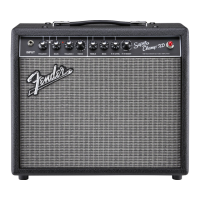
Do you have a question about the Fender Super Champ-XD and is the answer not in the manual?
| Type | Hybrid |
|---|---|
| Power | 15 Watts |
| Preamp Tubes | 1 x 12AX7 |
| Power Tubes | 2 x 6V6 |
| Inputs | 1 x 1/4" |
| Speaker | 10" Fender Special Design Speaker |
| Channels | 2 |
| Effects | Reverb, Delay, Chorus |
| Outputs | 1 x 1/4" |
| Dimensions | 17.5" |
| Weight | 24 lbs |
Explains bypassing the DSP board and creating a tone control for the Fender Super Champ XD amplifier.
Details required technical skills, tools like soldering iron, heat gun, and multimeter for the modification.
Emphasizes the importance of reading instructions and wearing protective eyewear before starting.
Lists required resistors (10k ohm) and capacitors (.03uF, 4.7/5.0uF) with voltage ratings.
Specifies hookup wire, heat shrink tubing, tie wraps, and optional label maker.
Instructions for unplugging power/speaker, removing chassis, and orienting the circuit board.
Detailed steps on cutting PCB traces around R85 (VOLUME) and R84 (GAIN) as per schematic.
Guidance on cutting and insulating specific conductors (#1, #2, #3, #8) on the ribbon cable.
Describes connecting wires and components to specific pins (P5 pin 11, 5, 13, 1) on connector P5.
Details the wiring steps for connecting components to terminals A, B of R85 and R52.
Details the wiring steps for connecting components to terminals A, B, and C of R84.
Instructions for capacitor connections, securing wires, and reassembling the chassis into the cabinet.
Provides a schematic diagram illustrating the modified circuit with red indicators for changes.
Presents measured frequency response data for the amplifier in FLAT and BRIGHT modes.
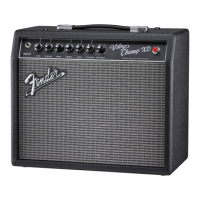
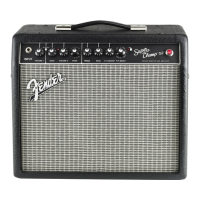
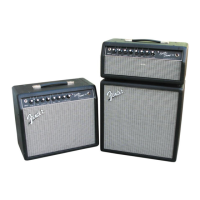

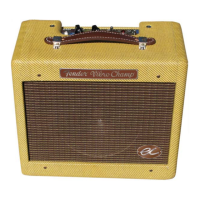

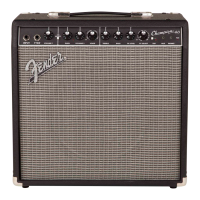

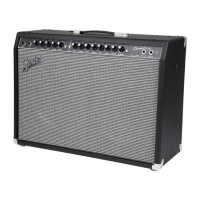

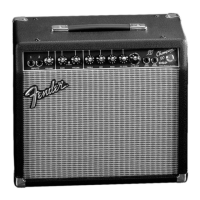

